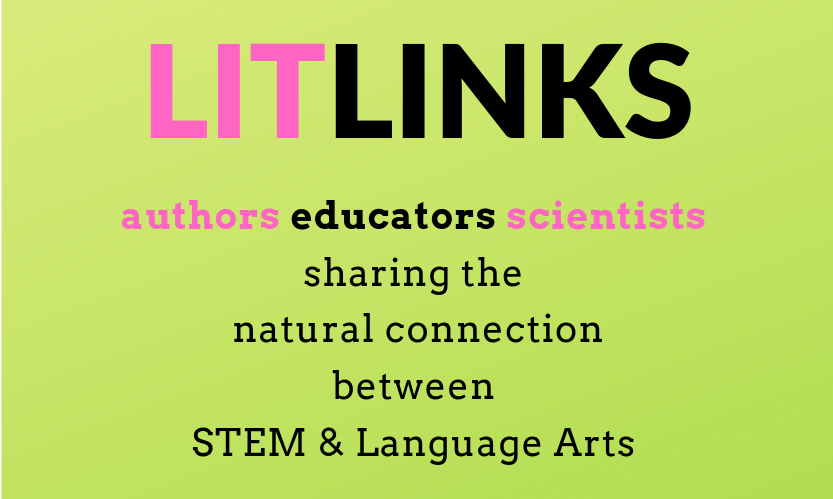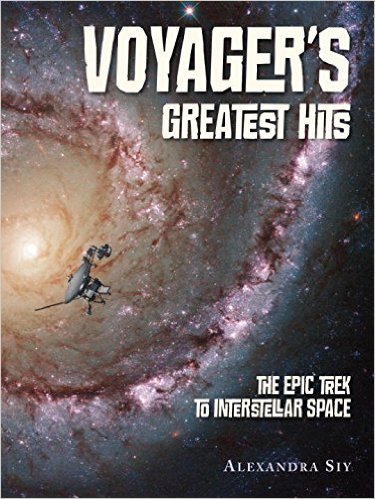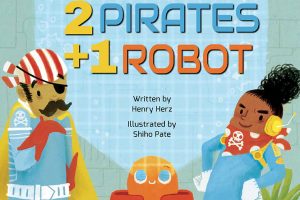
GUEST BLOGGER ALEXANDRA SIY
The original Golden Record
In 1977, NASA launched the twin Voyager spacecraft to explore the outer planets. Today, the Voyagers are beyond our solar system where they continue their epic journey of exploration and discovery in interstellar space. Onboard each Voyager is a Golden Record, an analog collection of songs, sounds, images, and scientific information about us—the people of planet Earth.
The Golden Record was the idea of Frank Drake, the original SETI astronomer. (SETI is Search for Extraterrestrial Intelligence, an organization dedicated to the search for life beyond Earth.) However the legendary astronomer Carl Sagan who produced the Golden Record said, “The spacecraft will be encountered and the record played only if there are advanced spacefaring civilizations in interstellar space. But the launching of this “bottle” into the cosmic ocean says something very hopeful about life on planet earth.”
The Golden Record was an LP—a long playing record, etched in copper and plated with gold, designed to withstand cosmic radiation. As an analog recording, it had limited space: 116 images and 90 minutes of music. The creators of the record agreed they would focus on the beauty and diversity of Earth and its people, and not include religious, divisive, negative, political, or violent themes.
Now, almost forty-five years later, what would your students include on a Golden Record launched in 2022?
The Golden Record remix
In this STEAM activity, students will research the original contents of the Golden Record (see links to resources) and then create their own digital Gold Record Remix. It should contain music, sounds, pictures, human voices, and information that would give aliens an idea of what the Earth is like in 2022.
Each student will contribute something to the record in digital format such as Keynote, Power Point, iMovie, or Flip Grid. There should be a balance of music, pictures, sounds, and information. The teacher should decide on the breakdown, for example, ten songs, fifty images, and several important scientific topics could be a simple way to organize the record.
Focus on STEAM
First, students decide which STEAM themes to include. Should the record stick to the original goal of presenting only positive images and media? Or will you include challenging topics, such as COVID-19 and the effects of climate change?
Working in pairs or small teams, students create “tracks” for the record based on their research and interests. You might use the following example form for collecting information and evidence for determining what songs to include. Create additional forms for collecting evidence about scientific images and other topics.
- What is the name of the song?
- Are there specific lyrics that resonate with you?
- What are some of the words that communicate a message?
- If the song does not have lyrics, what does it communicate without using words.
- What else about the song makes it a good choice for the Golden Record? Think about:
- What is the emotional impact of the song?
- Does the song contain information that you think is important to share?
- Does the song raise questions.
- Name the artists who created this song and when they created it.
- Write a short paragraph that states why you think this song needs to be part of the class Golden Record. Be specific. Include details from the song about the lyrics, themes, musical style, and anything else that could convince the class to include the song.
Sharing the record
The original Golden Record only contains images and songs with copyright permission. The Beatles hit, Here Comes the Sun,” was not included because their record company refused to give permission to use the recording. Students should be aware of copyright and how to properly credit creators of art and music on their Golden Record before sharing it online. Sharing the record is an aspect of the project that teachers and students can explore based on goals for the project.
Hopefully, this project will inspire students to read more books about space exploration, research contemporary scientific issues and discoveries, and explore human expression and its infinite creative power.
Resources
Featured image of Earth: “Earth” by kristian fagerström is licensed under CC BY-SA 2.0
Alexandra Siy is the author of more than twenty notable books for children including Mosquito Bite, Voyager’s Greatest Hits, and Cars on Mars, and the winner of many awards including the American Institute of Physics Science Writing Award, the NSTA Best STEM Book award, and an NCTE Orbis Pictus Honor. Alexandra shares her passion for science, photography, and books with students of all ages as a teacher and visiting author. She lives in New York State. Please visit www.alexandrasiy.com.











Leave a Reply
Your email is safe with me.